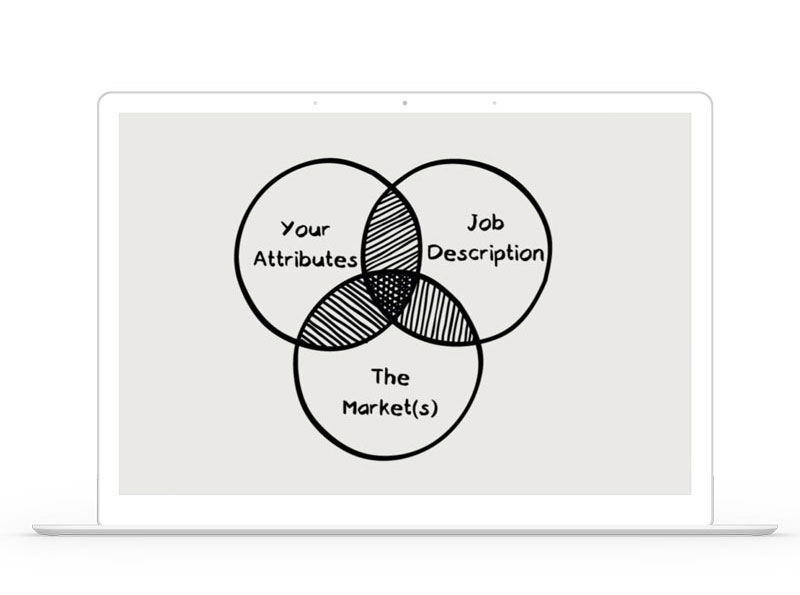Tips for Crafting an Impactful CV
Many jobseekers miss out because their CV never gets past the ATS robot screen and onto a human’s desk. In today’s competitive UK job market, a CV isn’t just a list of past jobs; it’s your main tool for showing you’re the right person for the role. Take the time to do it properly and focus on quality, not quantity.
What makes a winning CV?
These days, putting together a winning CV takes more effort than many people realise. Too often, applicants rush out a generic version that fails to get past the screening software employers use, tipping it straight into the digital bin and causing frustration. A CV needs to be clear, easy to read, and well organised, highlighting your skills, experience, and qualifications in a way that shows employers you meet their needs and deserve to be short-listed.
Getting your CV past the ATS filter
Many ATS robots do more than look for keywords. They often use AI to judge how well your CV fits the job overall, checking whether your achievements, training, and past roles match the employer’s job description. If your CV is not organised with this in mind, it is likely to be rejected before a human reads it.
Tips for writing a CV: an overview
Don't treat your CV as a chore. See it as your chance to show why you fit the job.
- Customise your CV - tailor it to the role and sector you are applying for.
- Use active language - show what you achieved and how you contributed.
- Match the job advert - include relevant keywords and phrases from the listing. This is how to stand out from the crowd.
- Keep it concise - make it clear, well laid out, and easy to read.
- Check it carefully - fix spelling mistakes and typos that can cost you an interview.
- Online applications - Many companies use online application forms to filter out weaker candidates. To boost your chances of getting through the first stage, make sure you fill in every section carefully and include all the key details from your CV in the form.
Ask someone experienced to review your CV. A fresh pair of eyes can spot mistakes and unclear parts. Tailor your CV, use plain, active language, and mirror the advert’s wording where it fits.
Hiring companies do not have time to read between the lines on your CV and cover letter. Tailor each application to the job and meet the specific requirements listed in the job advert.
Up to 70% of CVs are rejected during the ATS screening process. ATS algorithms are designed to swiftly and reliably identify the most qualified candidates for a job, and most CVs routinely fail to match the job description, keywords or selection criteria.
Making your CV stand out from the crowd
Tweaking your cover letter and emailing a standard CV won't suffice for applications nowadays. Your entire submission must align with the employer's job description, to pass ATS filters and get to a human.
- Don't make this mistake - Many people think 'standing out' means listing everything they’ve ever done. It doesn’t. Standing out means showing the employer exactly what they are looking for – and leaving out what they’re not.
- Work out what the employer really wants - Read the job advert carefully. Then bring together the qualifications, skills, experience, and personal qualities that match what the employer wants.
- Tailor your CV - Use what you’ve learned to tailor your CV to the job. Highlight your key strengths and achievements in a way that clearly shows how you meet the selection criteria.
Don't sound like a foreign robot - Ai CV writing can make you sound generic, keyword-stuffed, foreign or misaligned to the job description. I can spot it a mile off, and so can most HR people. It’s the same wording, line spacing, punctuation and it's cliche-ridden. So ironically you might be rejected for not being a real person!
~ Elle Bradshaw
TAGS: Oxford CV Writer. Expert CV writing support for general jobseekers, returners, and first-time applicants across Oxfordshire and the South-East of England. Services include CV writing in Oxford, Banbury, Bicester, Abingdon, Didcot, Reading, Newbury, Thame, Wantage, Aylesbury, High Wycombe, Buckingham and Witney. We provide tailored, ATS-friendly CVs for roles in retail, admin, trades, hospitality, customer service, care, logistics and more.
I'm a qualified marketer and seasoned writer, which means I know exactly how to frame your CV not just as a list of jobs but as a compelling argument for why you deserve that interview spot.
~ Elle Bradshaw
Schedule an appointment
For a fifteen-minute conversation with Elle prior to purchase, please click on the telephone icon to arrange a complimentary call at a time that is mutually convenient
Tips for writing a CV: The basics
Before you write your CV and cover letter, read the job advert carefully so you understand exactly what the employer wants. If you miss their instructions, you may not reach the interview stage.
- Check the deadline - submit your application on time.
- Follow the rules - stick to the length or format the employer asks for.
- Use their language - include keywords from the advert to show you meet their requirements.
- Check for errors - even small mistakes like spelling errors can make you look careless or suggest you do not take the job seriously.
Structuring your CV
To increase your chances of passing Applicant Tracking Systems (ATS), structure your CV so it is easy to read and has the right information in the right places.
Designing the layout
Arrange your CV in a clear and logical way. Use bullet points to separate key details so they are easy to scan.
Formatting your CV
- Make sure your CV and cover letter use the same format, including font, size, and spacing.
- Use clear headers for each section.
- Leave enough white space with proper margins so the document is easy to read and print.
Perfect spelling, grammar, and punctuation
Your CV and cover letter should be free of mistakes. Errors suggest poor attention to detail and can reduce your chances of being shortlisted. Ask someone you trust to review your CV if you need help spotting errors.
Employment history
- Put your work history in its own section.
- List jobs in reverse order, most recent first, with start and finish dates.
- If you stayed in the same job for over 10 years, you can summarise it on one line, e.g. "2005–2015 | Company Name | Job Title".
- For more recent roles, include bullet points for key tasks and duties.
Highlighting key achievements
Show how you made a difference in past roles. Add achievements alongside duties to make your CV stand out. Use numbers and examples where you can, such as “Increased sales by 20%” or “Trained 5 new staff members”.
CV length
Your CV does not always need to be limited to two pages. Only cut it down if the employer asks. Focus on making the content relevant and easy to follow.
My CV building process
-
Review of selection criteria
We look closely at what the employer is asking for and make sure your CV matches their needs.
-
Discussion about potential employer
We think about the employer’s culture, the type of work they do, and the situation they are in, so your CV speaks to what matters to them.
-
Personal qualities 'gap' analysis
We check how well your qualities fit the role, highlight your strengths, and reduce the impact of any weaker areas.
-
Initial CV build
We create the first draft of your CV, showing your skills and experience in the best possible way.
-
Review and Refinement
We then improve and polish the CV to make sure it tells a clear and convincing story about why you are right for the job.
-
Preparation of supporting documents and social media profile
After the CV is ready, we prepare any other documents you need and, if required, update your social media profile to give a consistent professional image.
-
Application
At the end, we help you put in a complete and well-prepared application to maximise your chances of getting an interview.
-

Elle Bradshaw in a The Daily Telegraph article by Liz Hoggard.
Why I'm a prime choice
CV Writing & Advice
Hello, I'm Elle. I personally take charge of every project, ensuring no aspect of your CV creation is passed off to CV mills, bots, contractors, or juniors. With over fifteen years in a recruitment agency, specialising in both recruitment and CV optimisation, I've seen the spectrum of application missteps and successes.
Given the 'ocean of ordinariness' I see in the current wave of poorly tailored, inartfully GPT'd executive CVs, it helps that I am a qualified marketer, author, and seasoned HR consultant.
My passion has always been creative writing and puzzle-solving. This blend of science, data, language, and originality is ideal for advanced job applications: understanding employer needs, matching skills, knowledge, cultural nuances, and experience to those needs, and presenting a compelling proposition.
Prefer to chat first? Phone me: 07537-133-488, Txt me: 07537-133-488 , Facebook me, or Whatsapp me.
Please complete this form to outline your needs and schedule a 15-minute chat to discuss your needs. I will respond with available time and date options.
Hitting the sweet spot with your CV

Selection criteria may not be explicitly stated in a job description, but addressing them is crucial if you are to align your application to the employer's needs, requirements, and circumstances.
- Your attributes: The first circle represents your (the applicant's) knowledge, achievements, and skills
- Job description: The second circle represents the employer's strategic and operational needs in filling the post
- The market: The third circle represents the broader trends and challenges facing the employer's industry
This succinctly illustrates why each senior executive CV and its accompanying documentation must be tailored to an employer's requirements, needs, and situation. Venn and the art of the CV (Bradshaw, Edwards 2022).
CV alignment with selection criteria
-
Begin with the employer's needs.
This vital process entails deeply considering the employer's selection criteria. Understanding their demands allows us to precisely tailor your application to meet their expectations.
-
Your attributes versus their needs.
We evaluate how your qualities, experience, and achievements align with the employer's selection criteria. This review guides our approach to accentuate your strengths and address or downplay any weaknesses, ensuring your application is best positioned.
-
Starting Your CV
The groundwork of your application is laid here with the creation of your CV's first draft. Utilising insights from earlier steps, we showcase your achievements, skills, and experience in a pitch crafted for the role.
-
CV review and refinement
Next, we carefully review and enhance your CV, focusing on crafting a narrative that aligns closely with the employer's requirements. Each aspect is examined to ensure optimal alignment and a compelling pitch.
-
Supporting documents and social media.
We prepare requested supporting materials like cover letters and answers to questions. We also create or fine-tune your social media presence to ensure it reflects a consistent and professional image, further supporting your application.
-
Application submission.
This final phase is where you submit the carefully curated and error-free application to the potential employer, ensuring it adheres to all specifications. This is designed to maximise your likelihood of being called for an interview.
-
This approach aims to boost your success in securing interviews by aligning your profile with employer expectations and weaving a persuasive story of your skills and experience.
Aligning your CV
Tailor your CV to the prospective employer's specific needs and demonstrate how your accomplishments align with their requirements. Providing concrete examples with metrics strengthens your case and enhances your chances of securing an interview.
- Your attributes: The first circle represents your (the applicant's) knowledge, achievements, and skills
- Job description: The second circle represents the employer's strategic and operational needs in filling the post
- The market: The third circle represents the broader trends and challenges facing the employer's industry


